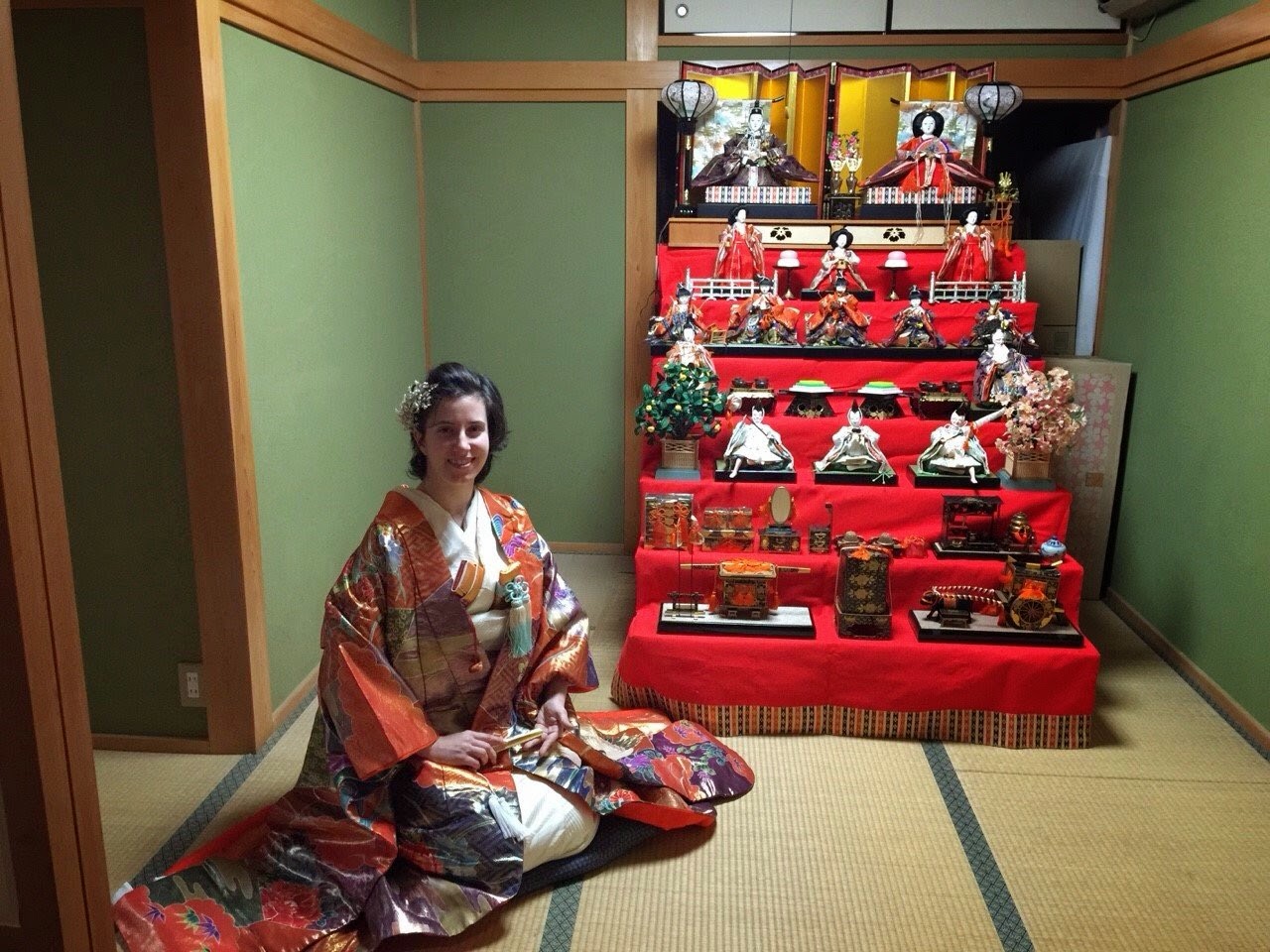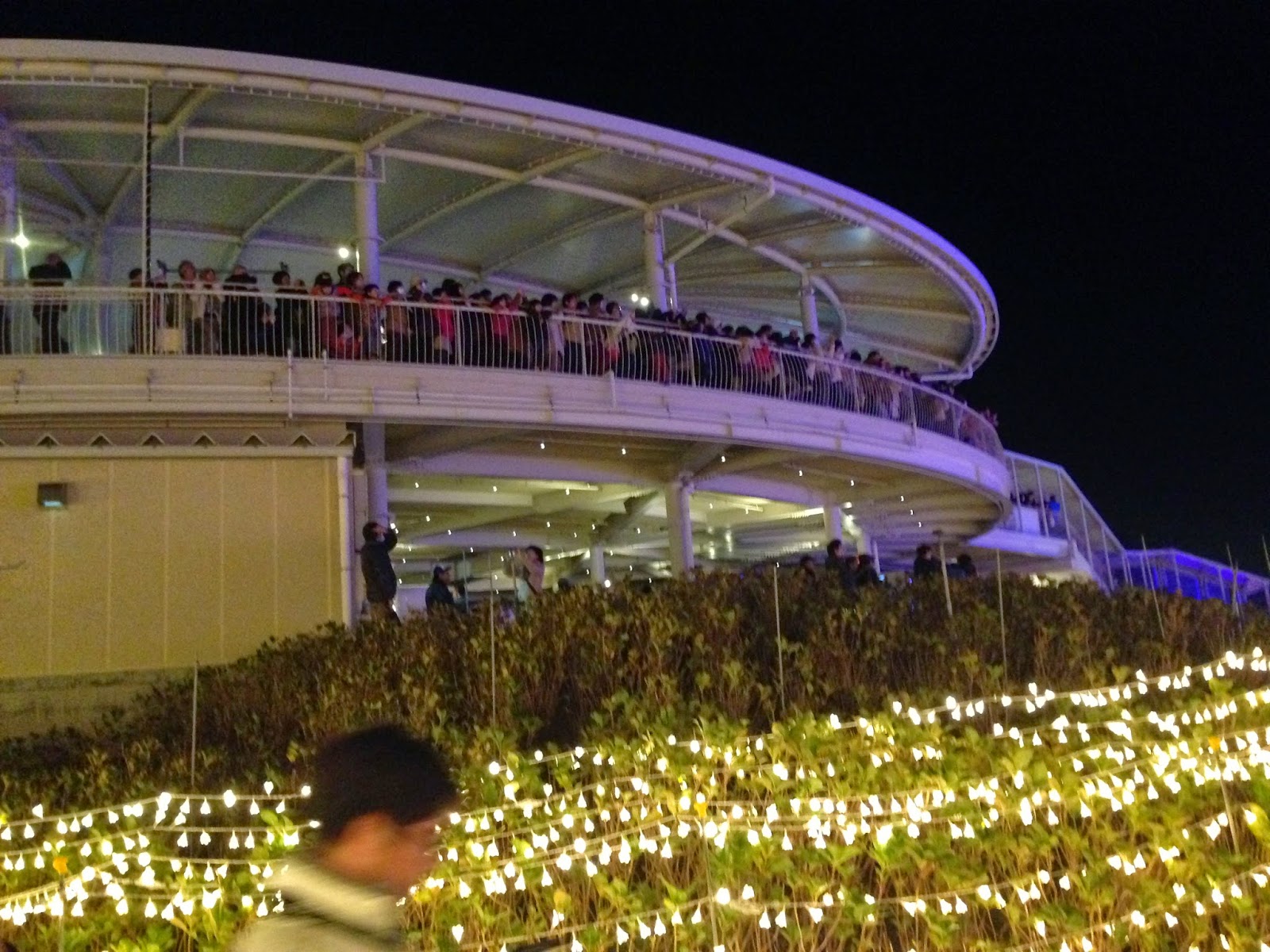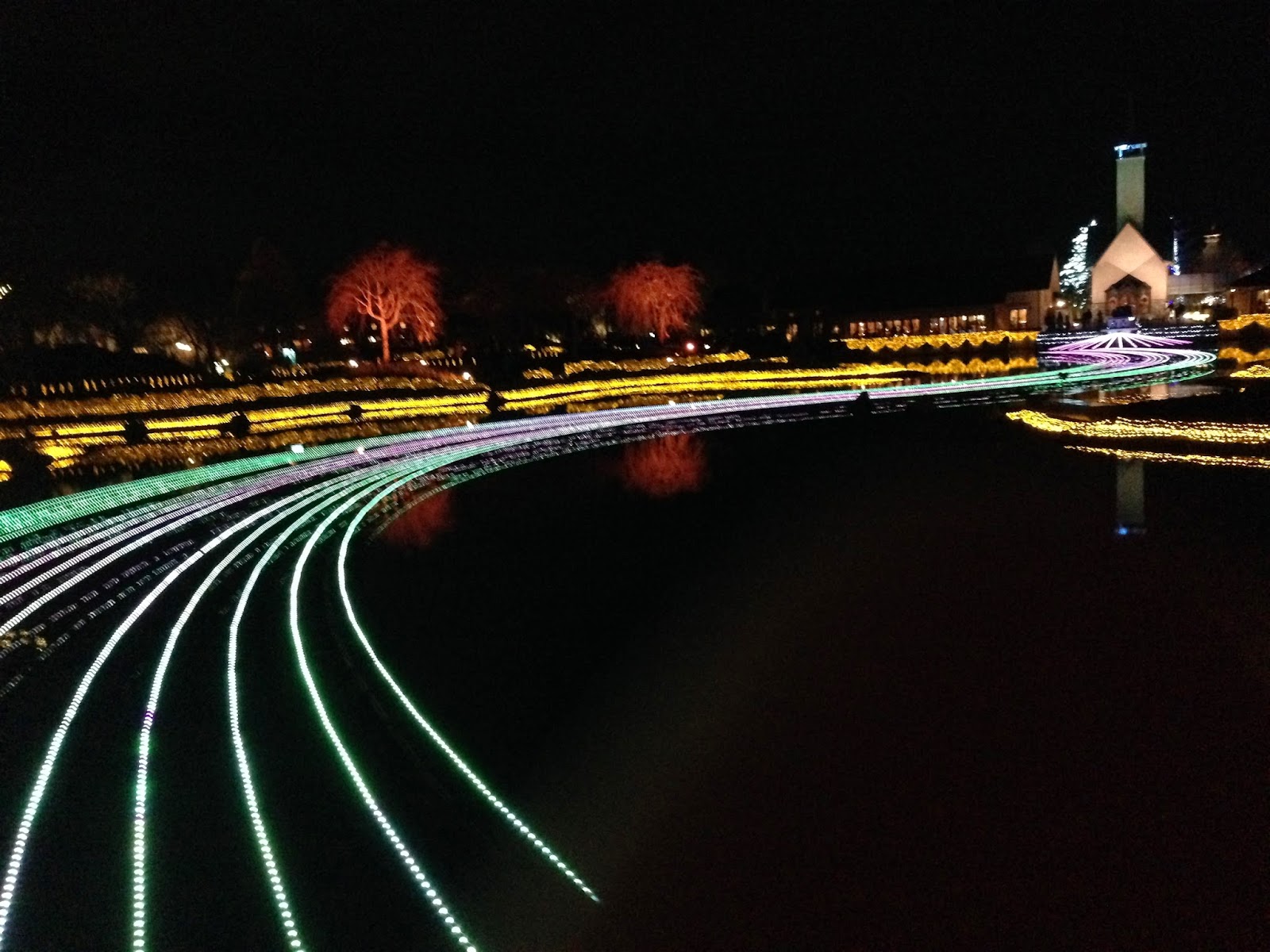The other day, I met with a secretary from one of my schools. She is a kimono expert and loves to play dress up with me. Before we go to tea ceremony together, she insists that I come to her home so that we can both dress in kimono and attend together. With over 100 kimono to choose from, I'm always surprised with what colors and patters she has planned for me.
On this particular occasion, I had asked that we just practice simple belt tying since I wanted to be able to do my own kimono in America. Up until then, she had always tied my belt for me. However hard I tried to follow her steps, she moved too quickly and knew too many knots for me to properly remember. Of course we practiced tying this simple bow style knot on my kimono and obi, but first......
...the teacher wanted to show me something even more spectacular! Wedding kimono!
Most Japanese families don't actually have their own wedding kimono, but rent them from a company instead. The headdress, accessories, and shoes are also rented as well. However, being the kimono fanatic that she is, my secretary friend has three full sets of wedding kimono in her collection. I asked her why she had them and her response was a whimsical, "I just felt like having them and thought that I could practice tying them better if I had them always on hand."
Wedding kimono are worn slightly different than the normal kind and are usually worn with a very large top layer, even in the summer time. First, the bride wears a white kimono underneath and switches out two top layers for during and then after the ceremony. The one during the ceremony is white and the one afterwords can be many colors, but is primarily red.
And then it hit my secretary friend.
"Oh! I've got a great idea! My daughter-in-law-to-be is going to use my kimono for her wedding photos, but we haven't decided which ones. I'm also out of practice with tying them. Why don't you wear them for me and we can decide which ones look best?!"
And so, my lesson turned into playing dress up again ;)
Here is the first dress - the bottom layer that everything else would cover eventually. However, even if it would hardly show, the secretary made sure that each crease and fold was done as perfectly as possible. It was a little difficult because, while I have a very long torso (which does well for showing off an obi), I have a very narrow waist and an hourglass shape. That paired with my taller (when compared to Japanese women) height, my body is not ideal for kimono. The secretary usually pads my stomach with pillows and towels to make my figure flatter. The hair ornaments were made by the secretary from pearls and wires. They are broaches that we pinned into my hair to mimic a bride's hair pieces.
Fun Fact!!! Can you see the little pouch resting in my lapel opening? That is a little wallet for the bride to store things. I have a white fan in my hand that I could also store in my belt or lapel. Also, do you see the obnoxiously large tassel above my belt? it is the fastener for the pouch for the knife a bride always carries. When dressed this fabulously and wearing your most expensive items, it makes sense that you'd want some protection. However, now it is just a traditional ornament, like our "something old, something new" items.
Here is the first:
Finally, my favorite of the three. This is the colorful, after ceremony kimono. As you can see, it has lots of colors, but is primarily red. All we've done is trade out the outer layers, so the white from the original simple kimono is only seen at the top and the front.
Thank you so much for letting me wear such lovely clothes, Sensei! I look forward to seeing your son and daughter-in-laws wedding photos some day.





































